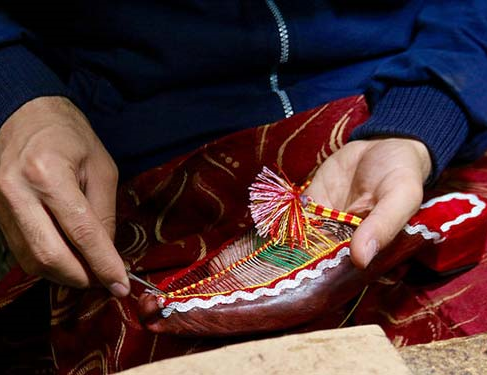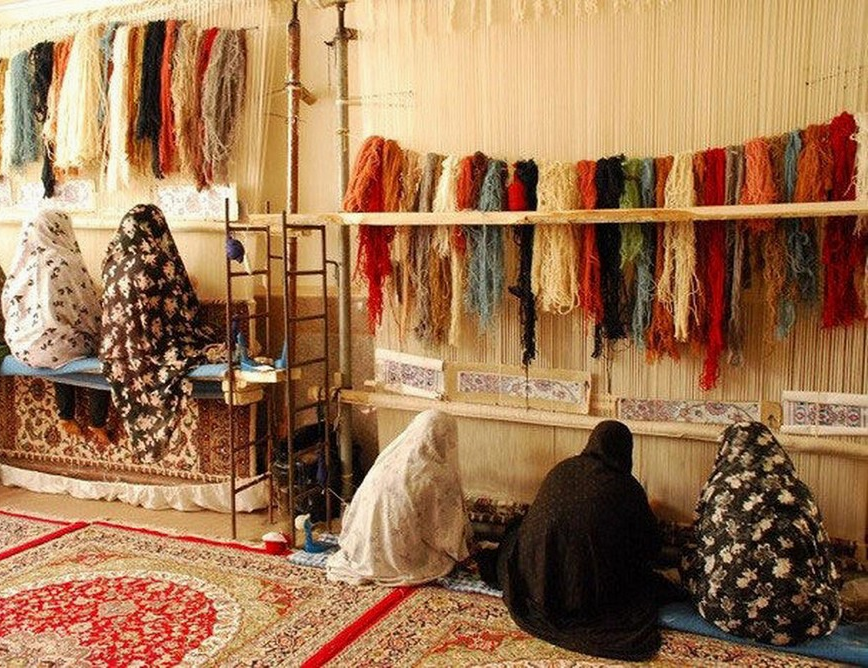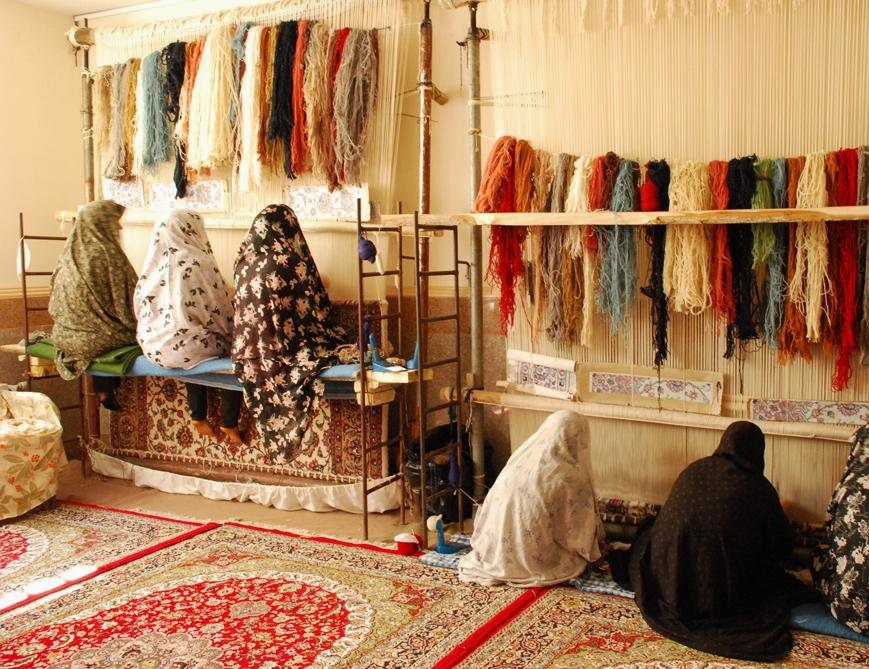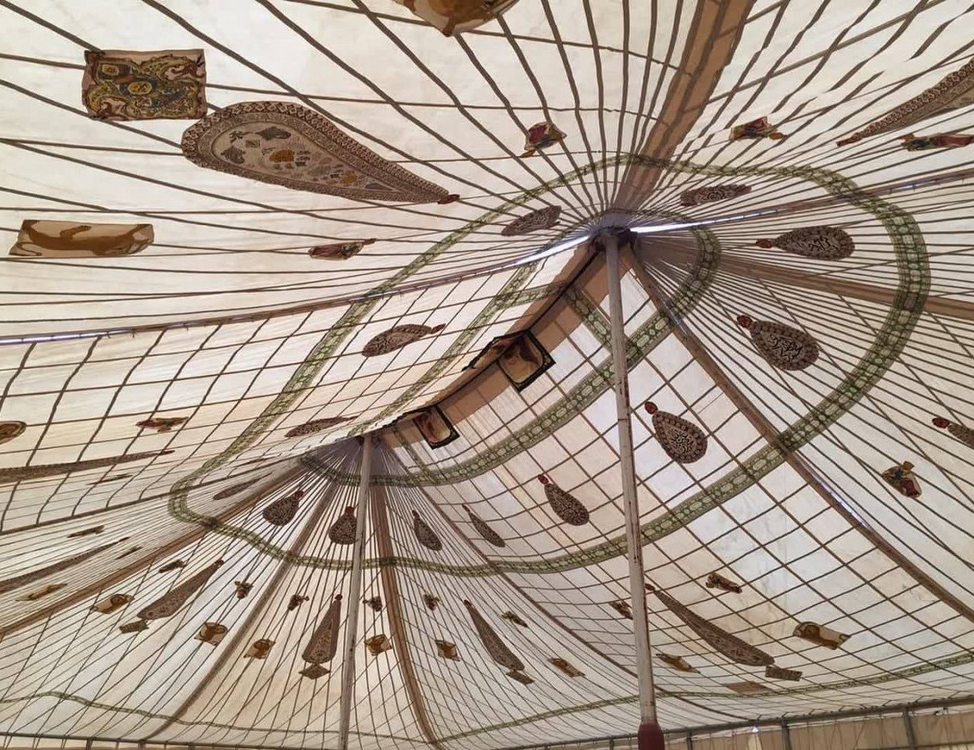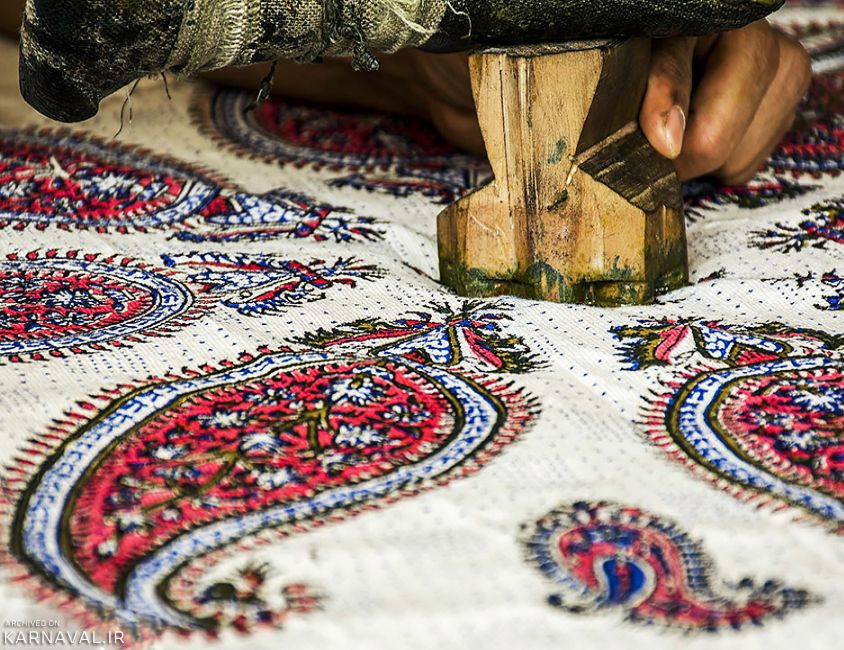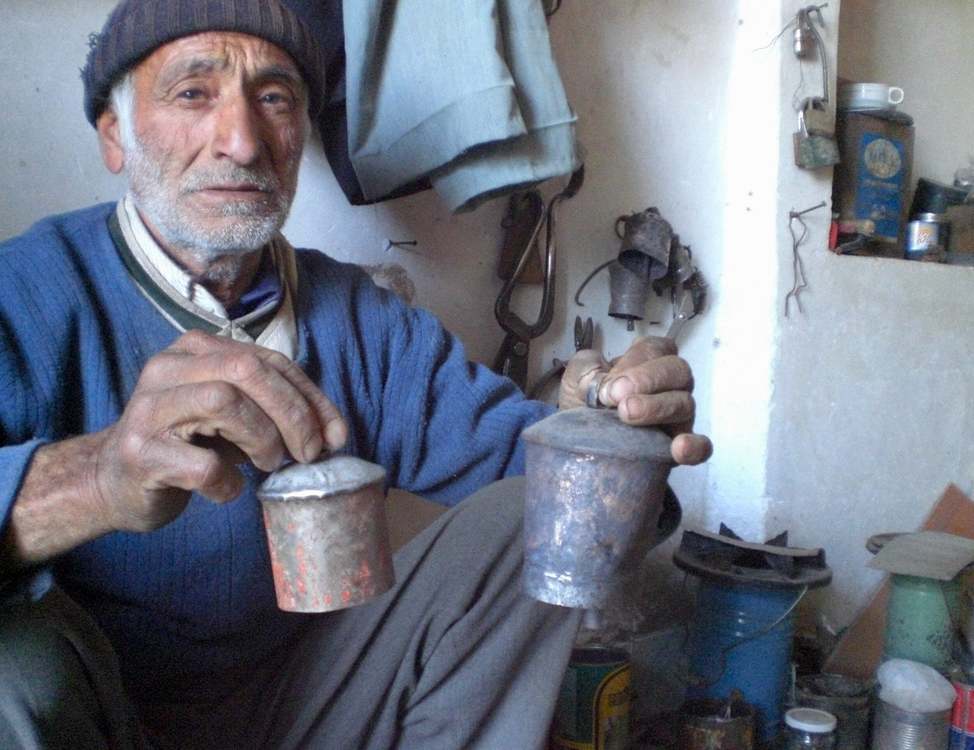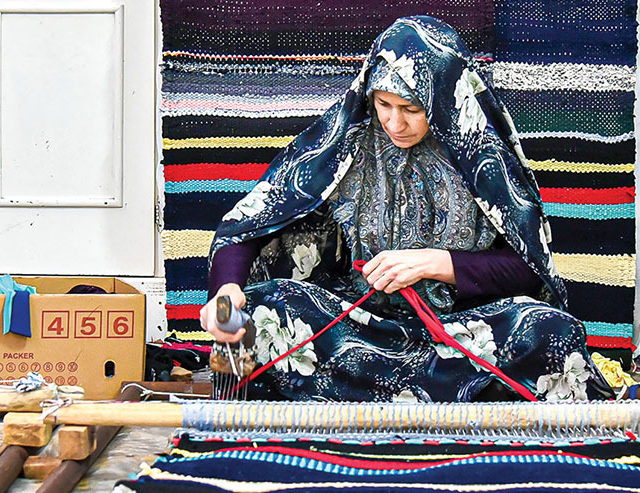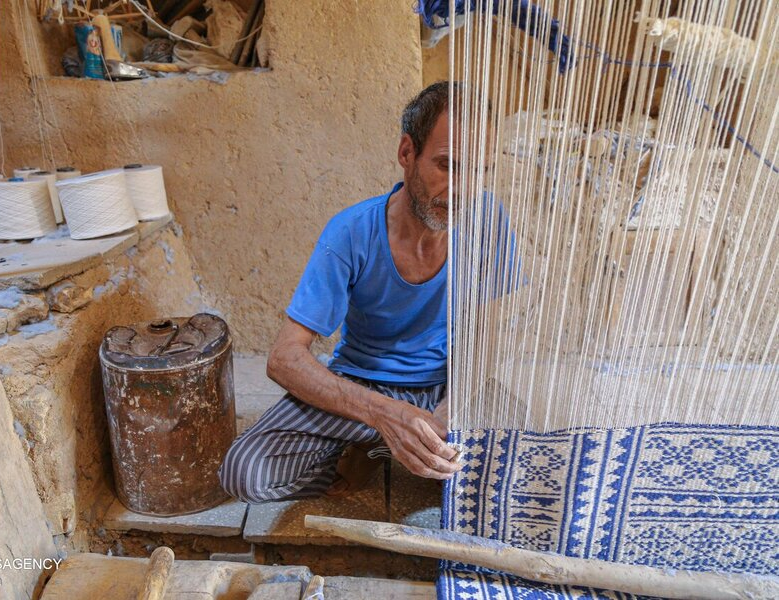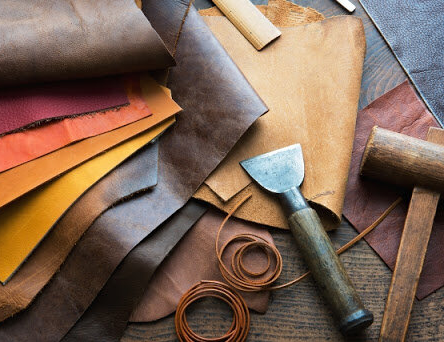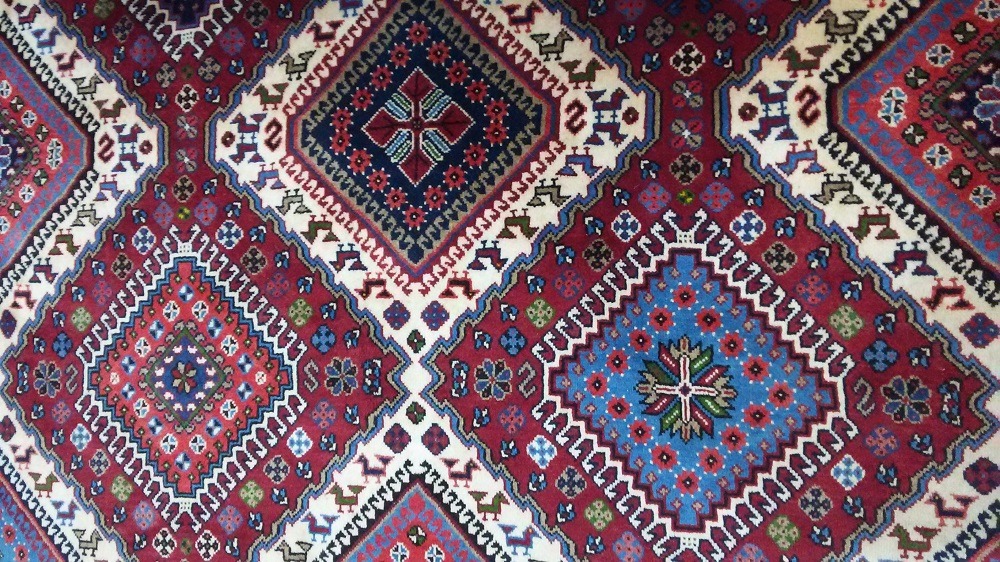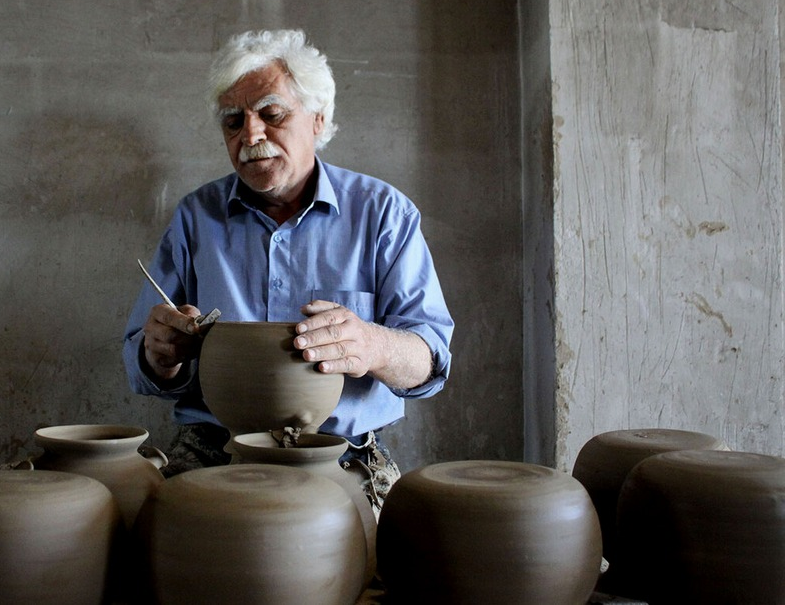
Iranian Khatam
Handicrafts can be classified on the basis of their designs and the raw materials used in them. From this point of view, Khatam should be considered one of the most important Iranian handicrafts, which is done on wood and metal to create attractive and eye-catching products.
In this art, artists put small triangles or regular polygons together and use them to create beautiful shapes and designs. These small pieces may be made of metal or other materials, such as bone and wood. The elegance of the art of Khatam is related to the size of these geometric shapes, and the smaller the shapes, the more difficult it is to create the effect and the higher its value and elegance.
The Tools and Materials Required for Making Khatam
In order to create Khatam products, in addition to drawing a map, the craftsman must use tools for cutting, grinding, and pressing. Saws, files, graters, sandpapers, gouges, and all kinds of clamps are widely used in a Khatam workshop.
The pieces of wood used in Khatam are mainly obtained from jujube, orange, walnut, and ebony trees. The metals used are brass, aluminum, silver, and bronze. Sometimes camel, donkey, horse, and elephant bones are also used in inlaying. Natural glue and varnish are other basic inlay materials that are used for sticking and fixing the parts to the work surface.
Stages of Producing Khatam
This craft is produced in the following two stages:
Stage 1 - Preparing the pieces required
Many tasks must be done before the implementation of Khatam work, which includes preparing the intended design and materials, cutting the raw materials into the pieces of the intended size, and gluing the pieces to form the “Qamah”, which is the smallest geometric unit used in Khatam and consists of at least three triangles. Large Qamehs have up to 400 triangles.
In this step, wood, bone, and metal are first cut into triangular prisms and then they are placed together so as to form regular geometric shapes. These pieces are placed in a special order on a thin wooden sheet using glue, and after drying they are used to decorate objects.
Stage 2 - Khatamkari
Underlayment, gluing of Khatam layers on objects, and polishing are done in this stage.
History of the Art of Khatam
In the early Islamic centuries, a type of khatam work was popular in Iran, which was called “simple khatam”. Today, this type of inlay is called “square khatam”. In this type of khatam, instead of triangles, other shapes such as squares, rectangles, parallelograms, and rhombuses are used to decorate the wood surface of objects.
Khatam had been used for decorating many historical sites. For instance, this craft was used to decorate the wooden doors in the Jameh Mosque of Atigh in Shiraz and the tomb of the Emir of Samarkand. A pair of wooden doors of the tomb of the Emir of Samarkand, built in the 15th century, is now in the Hermitage Museum of Russia.
Based on the available evidence, the origin of today’s art of Khatam can be traced to the Ilkhanate era (1256 to 1356 AD). At first, Iranian artists learned a type of inlay work called “Chinese Inlay” and decorated wooden objects by putting small black and white triangular pieces together. But gradually, the use of red, green, and yellow parts also became popular. This development, along with the use of zinc and brass parts, created a revolution in the art of Iranian Khatam. It was during the same era that the use of geometric shapes other than triangles (pentagons, octagons, and decagons) became prevailed.
During the Timurid era (1370 to 1506 AD) Khatam had become so popular that the Turco-Mongol king, Tamerlane (reigned from 1370 to 1405 AD) asked the artists of this discipline to decorate the doors of Dilkusha Palace with Khatam. After Tamerlane’s death, his grave, too, was covered with a box made of Khatam.
In the Safavid era (1501 to 1736 AD), like many other Islamic arts, the art of making Khatam, too, had a significant growth. Shiraz, Isfahan, and Kerman were the centers of Khatam works at that time. The artists of the Safavid era used a new method called “Golbandi” in which prisms with triangle-shaped bases were placed together. During this period, green and red metals were also used for making Khatam.
Using Khatam knots and the use of semi-mosaic Khatam works became popular during the Zand era (1751 to 1794 AD) and in the Qajar era (1796 to 1925 AD) respectively. In the Qajar period, paper liners were used instead of wood and unpolished wire.
During the Pahlavi era (1925 to 1979 AD), chemical colors came to be used in Khatam works, which, in fact, had a severe negative impact on the very essence of this art. Nevertheless, valuable works were also created in this period, some of which were:
• Khatam Hall of the Marmar Palace
• Khatam Hall of the Building of Consultative Assembly
• Semi-round Khatam table, donated to the President of the United States, Eisenhower
• Table donated to Queen Elizabeth
• Khatam box of Hazrat Zainab’s Shrine in Syria
• Khatam box of the Tomb of Hazrat Abdul Azim Hasani in the city of Ray
Based on the available evidence, the origin of today’s art of Khatam can be traced to the Ilkhanate era (1256 to 1356 AD).
| Name | Iranian Khatam |
| Country | Iran |
| Cities | |
| Works | Wooden and stone |
| Registration | Unesco |
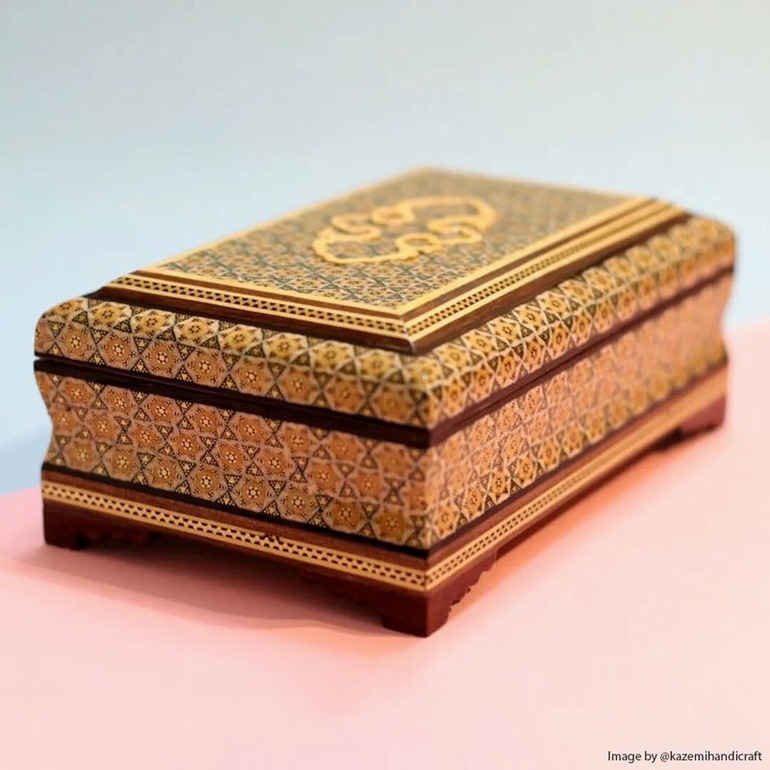

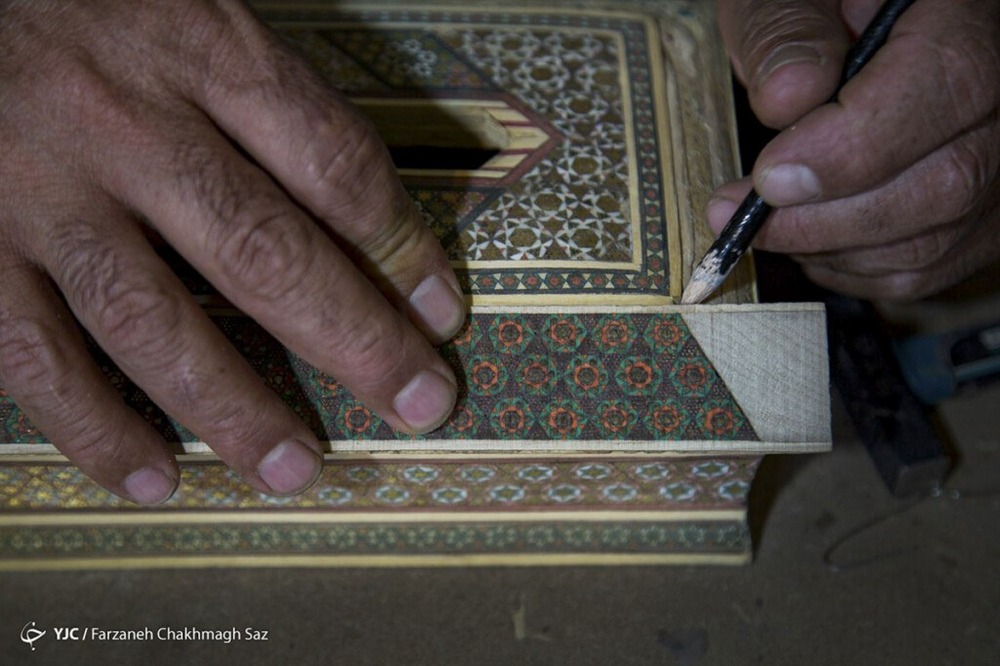
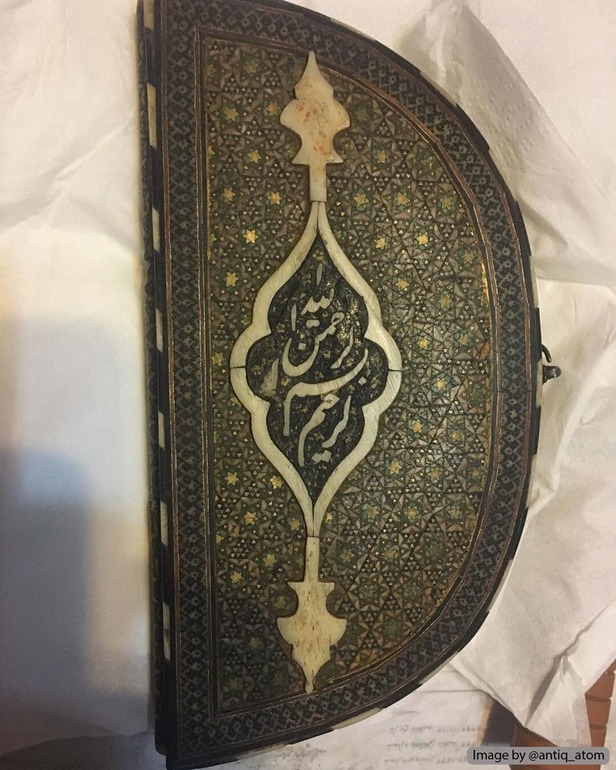




Choose blindless
Red blindless Green blindless Blue blindless Red hard to see Green hard to see Blue hard to see Monochrome Special MonochromeFont size change:
Change word spacing:
Change line height:
Change mouse type:
